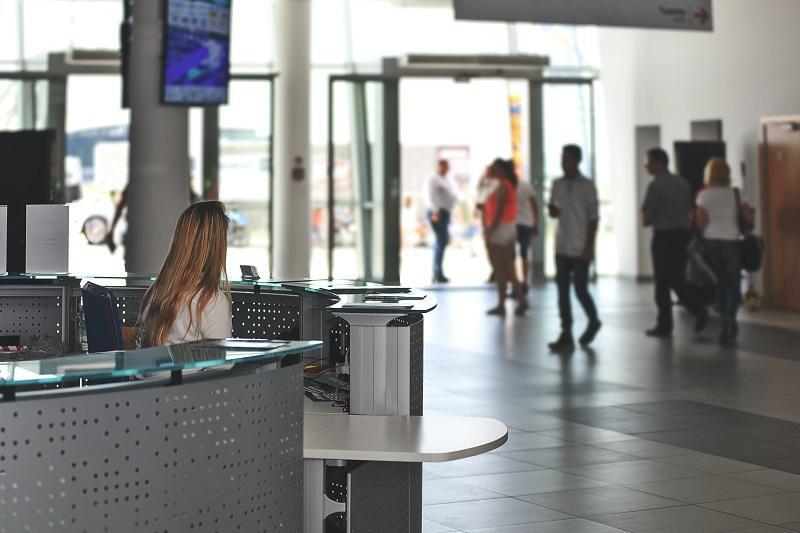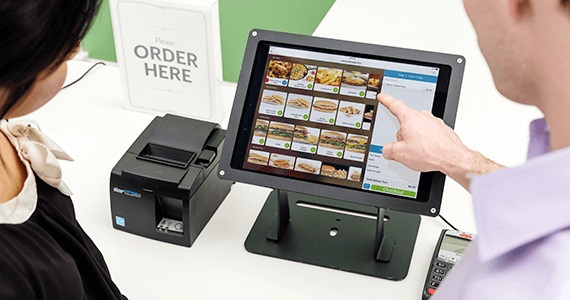Ticket Queue Management is like a digital waiting line where customer requests are organized. It helps businesses handle questions, problems, and tasks in an organized way.
Imagine a busy store with lots of customers. With a system, it would be manageable. Ticket Queue Management brings order. It ensures every customer’s needs are met, making them happy.
In this article, we’ll explore different components of the Ticket Queue Management Process in simple terms. You’ll learn how it keeps businesses running smoothly, discover the best tools, and learn how to use it for top-notch customer service.
Understanding this process can be helpful for both customers and businesses. Whether you’re a business owner or a customer, this knowledge will empower you to navigate customer service efficiently and make the most out of your interactions.
Embracing Ticket Queue Management means creating a smoother, more satisfying experience for everyone involved.
Ticket Queue Management Process
In the energetic world of customer service, managing requests effectively is critical to ensuring everyone gets the attention they deserve. Imagine a ticket dispenser at a busy deli, where each customer receives a number and waits their turn.
Similarly, Ticket Queue Management in business organizes customer inquiries, issues, and tasks, creating an orderly system. Let’s delve into the step-by-step process of how this invaluable tool keeps businesses running smoothly while enhancing customer satisfaction
1. Ticket Creation
In the Ticket Queue Process, the first step is Ticket Creation. It begins with Gathering Information, where customer details and requests are collected.
This information is then used to create the ticket. Like self-service kiosks streamline check-in, Ticket Creation sets the foundation for organized and efficient customer support.
2. Prioritization
Effective Ticket Queue Management hinges on Prioritization. This involves establishing Criteria for Prioritization, which could include factors like urgency or complexity.
Once criteria are defined, Priority Levels are assigned, ensuring that critical issues receive prompt attention while maintaining fairness in addressing all customer needs.
3. Assignment
The next vital step in the Ticket Queue Management process is Assignment. This involves Matching Skills and Expertise, ensuring that the right team member handles each ticket.
Businesses can choose between Automated Assignment, where the system allocates based on predefined rules, or Manual Assignment, where human judgment is crucial in selecting the best-suited agent for the task.
This ensures customer queries are directed to the most qualified individuals, enhancing efficiency and customer satisfaction.
4. Tracking and Monitoring
In the Ticket Queue Process, Tracking and Monitoring play a pivotal role. Real-time Updates keep both customers and support teams informed about progress. Additionally, monitoring Ticket Aging ensures that older inquiries receive attention, preventing delays.
This process is similar to WhatsApp queueing, notifying users of their message status. These practices ensure that every query gets noticed, maintaining a high standard of customer service.
5. Resolution
The culmination of the Ticket Queue process lies in Resolution. This involves adept Troubleshooting and Problem Solving, where support agents work diligently to address the customer’s issue. Clear Communication with the Requester is crucial, ensuring they’re informed every step of the way.
Finally, Closing Tickets is the formal conclusion of the process. It provides an opportunity for valuable Customer Feedback, allowing businesses to learn and improve from each interaction. This phase ensures that issues are resolved effectively and that customers feel heard and valued.
Tools and Software for Ticket Queue Management

When it comes to customer experience and service, having the right tools at your disposal can make all the difference. Ticket Queue Management is no exception.
Various software and tools have emerged to streamline this process, ensuring timely and efficient handling of customer inquiries. From intuitive dashboards to automated assignment systems, these tools are designed to enhance productivity and customer satisfaction.
Let’s explore some of the most effective solutions businesses can leverage to master the art of Ticket Queue Management.
1. Ticketing Systems
Ticketing Systems ( as a part of Queue Management Systems) are the cornerstone of an efficient Ticket Queue Management Process. One notable example is the ticketing system offered by Wavetec, a leading provider in this field.
Features:
- Customizable Ticket Fields: Tailor tickets to capture specific customer information.
- Automated Routing: Directs tickets to the correct department or agent, ensuring swift attention.
- Real-time Analytics: Provides insights into ticket volume, response times, and more.
Benefits:
- Enhanced Efficiency: Streamlines customer inquiries for quicker resolutions.
- Improved Collaboration: Facilitates seamless information sharing among support teams.
- Elevated Customer Satisfaction: Ensures concern is addressed.
2. Reporting and Analytics Tools
In addition to ticketing systems, robust Reporting and Analytics Tools are essential for gaining valuable insights into customer service performance. These tools empower businesses to make informed decisions and enhance customer experience.
Examples of Reporting and Analytics Tools:
Spectra
Spectra is a cutting-edge queue analytics software offered by Wavetec. It gives businesses detailed insights into customer behavior, service efficiency, and operational trends. Organizations leveraging Spectra can optimize resource allocation and improve customer service strategies.
Via OS
Via OS is a powerful self-service kiosk software solution from Wavetec. It empowers customers to take control of their service experience, reducing wait times and enhancing overall satisfaction while providing insights to businesses.
With Via OS, businesses can streamline operations and deliver a seamless, user-friendly service environment.
These advanced tools, including Spectra and Via OS, are pivotal in elevating customer service standards and driving operational efficiency. By leveraging their capabilities, businesses can stay ahead in the competitive landscape and meet the evolving needs of their customers.
3. Integration with Other Systems
Seamless integration with existing systems is crucial for a comprehensive Ticket Queue Management process. This ensures that information flows smoothly between different tools and platforms, enhancing overall efficiency.
Integration Capabilities:
These tools by Wavetec offer robust integration capabilities to complement its Ticket Queue Management solutions.
- Spectra Queue Analytics Software: Integrates seamlessly with various customer service platforms, providing comprehensive insights into customer behavior and operational performance.
- Via OS Self-Service Kiosk Software: Compatible with many business applications, enabling a seamless connection between self-service kiosks and core operational systems.
Benefits of Integration:
- Streamlined Workflow: Eliminates manual data entry, reducing the risk of errors and saving time.
- Enhanced Data Accuracy: Ensures that information is consistently up-to-date across all systems.
- Holistic View of Customer Interactions: Enables a 360-degree view of customer interactions and history, facilitating personalized support.
By integrating Ticket Queue Management systems with other business tools, companies can create a seamless ecosystem that maximizes productivity and delivers a superior customer service experience.
Best Practices for Effective Ticket Queue Management

Mastering ticket queue management is essential for smooth operations and satisfied customers when it comes to customer service.
Implementing best practices ensures that every inquiry, part of the ticket queue process, is handled efficiently and to the customer’s satisfaction. Additionally, leveraging technologies like people counting aids in resource allocation for optimal service delivery.
1. Clear Ticketing Guidelines
Well-defined ticketing guidelines set the foundation for effective Ticket Queue Management. These guidelines outline how tickets should be created, categorized, and prioritized.
2. Regular Training and Skill Development
Continuous training is crucial for support teams to stay updated with the latest tools and techniques. It hones their skills in handling diverse customer inquiries.
3. Communication and Collaboration
Open lines of communication and collaborative efforts among team members are essential. This ensures that information flows seamlessly, leading to quicker resolutions.
4. Continuous Improvement
Embracing a culture of continuous improvement allows teams to refine their processes based on customer feedback and evolving industry trends.
5. Security and Data Protection
Safeguarding customer information is supreme. Implement robust security measures to protect sensitive data and maintain customer trust.
Case Studies
Streamlining Customer Service: HBL’s Success with Wavetec’s Ticket Queue Management Process
HBL, a prominent bank, improved customer service using Wavetec’s Ticket Queue Management Solution. This strategic implementation revolutionized their queue system, ensuring fair and organized waiting via tickets.
With reduced wait times and improved customer flow, HBL witnessed heightened satisfaction levels. This success story underscores how an effective Ticket Queue Management Process, exemplified by Wavetec’s solutions, can significantly enhance the customer experience, solidifying HBL’s position as a customer-centric financial institution.
Revolutionizing Customer Service: McDonald’s Success with Self-Service Technologies
McDonald’s exemplifies the triumph of Ticket Queue Management. By embracing self-service technologies, they revolutionized customer service. With innovative solutions, McDonald’s streamlined their ordering process, reducing wait times and enhancing overall satisfaction.
This successful case study showcases how strategic implementation of Ticket Queue Management can lead to a seamless customer experience, proving invaluable for businesses in fast-paced environments.
Conclusion
As seen, the Ticket Queue Management Process is an indispensable tool in customer service. Its implementation, as demonstrated by the successes of McDonald’s and HBL, showcases its transformative potential.
Businesses can elevate their service standards by optimizing workflows, enhancing efficiency, and prioritizing customer satisfaction. Integrating advanced technologies, such as Wavetec’s solutions, further underscores the importance of staying at the forefront of queue management innovation.
Embracing this process ensures smoother operations and fosters enduring customer loyalty. As industries evolve, a well-executed Ticket Queue Management Process remains a cornerstone for businesses committed to providing exceptional service in today’s fast-paced world.
BOOK A FREE DEMO




